How to add image files to Datastore and create Virtual machine in ESXi server
How to add image files to Datastore and create Virtual machine in ESXi server
VMware ESXi server is a type-1 hypervisor and it can be installed on a bare metal. On top of the ESXi server even virtual machines can be created. This tutorial shows how to add images to Datastore and create virtual machine in ESXi server.
Installation Procedure
To add image files to Datastore
To start adding the image files to the datastore, select the storage in the Navigator Section.
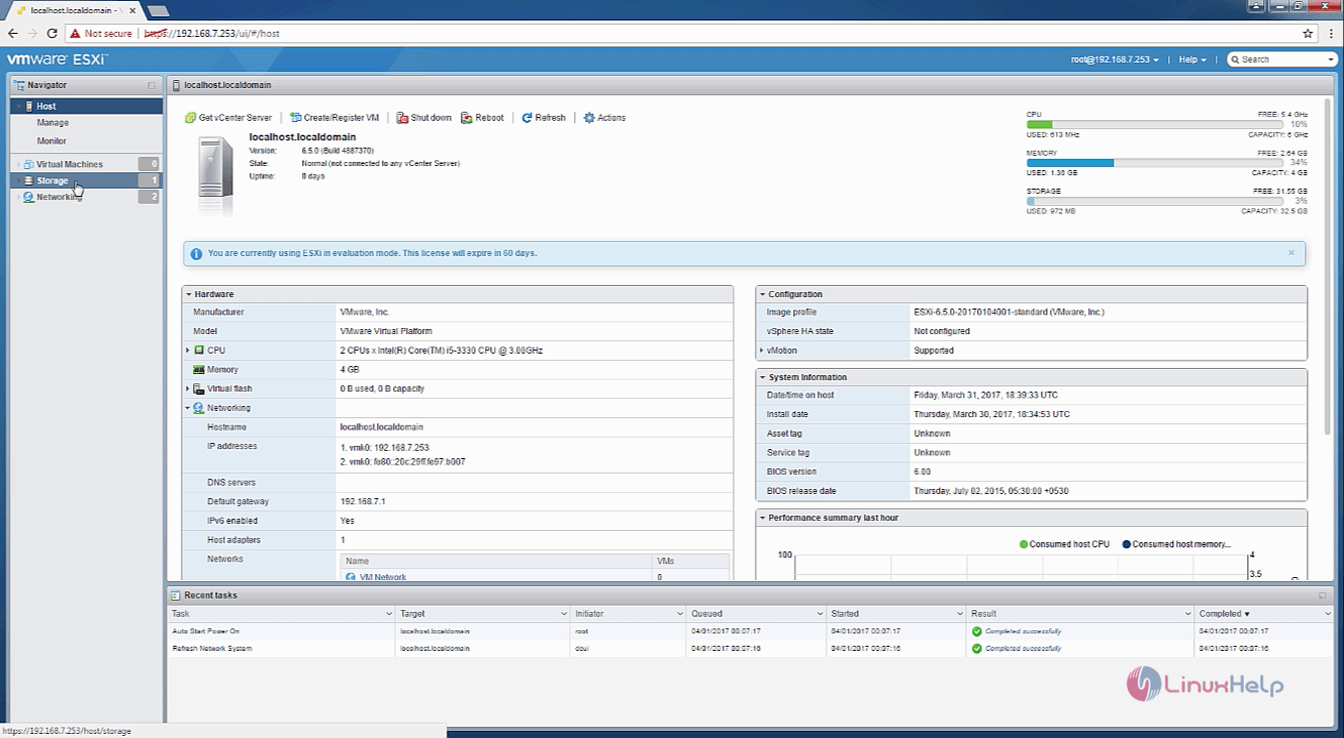
Now select the datastore1 storage.
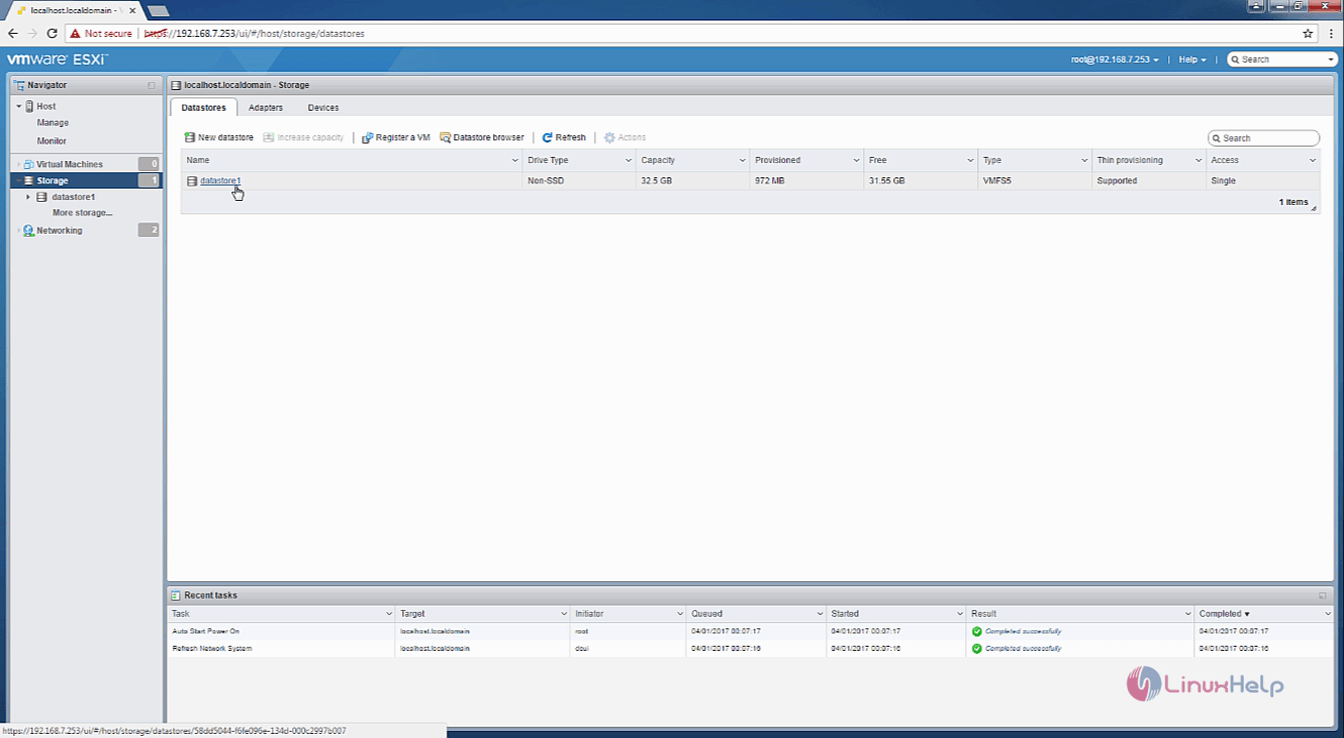
Next click the datastore browser.
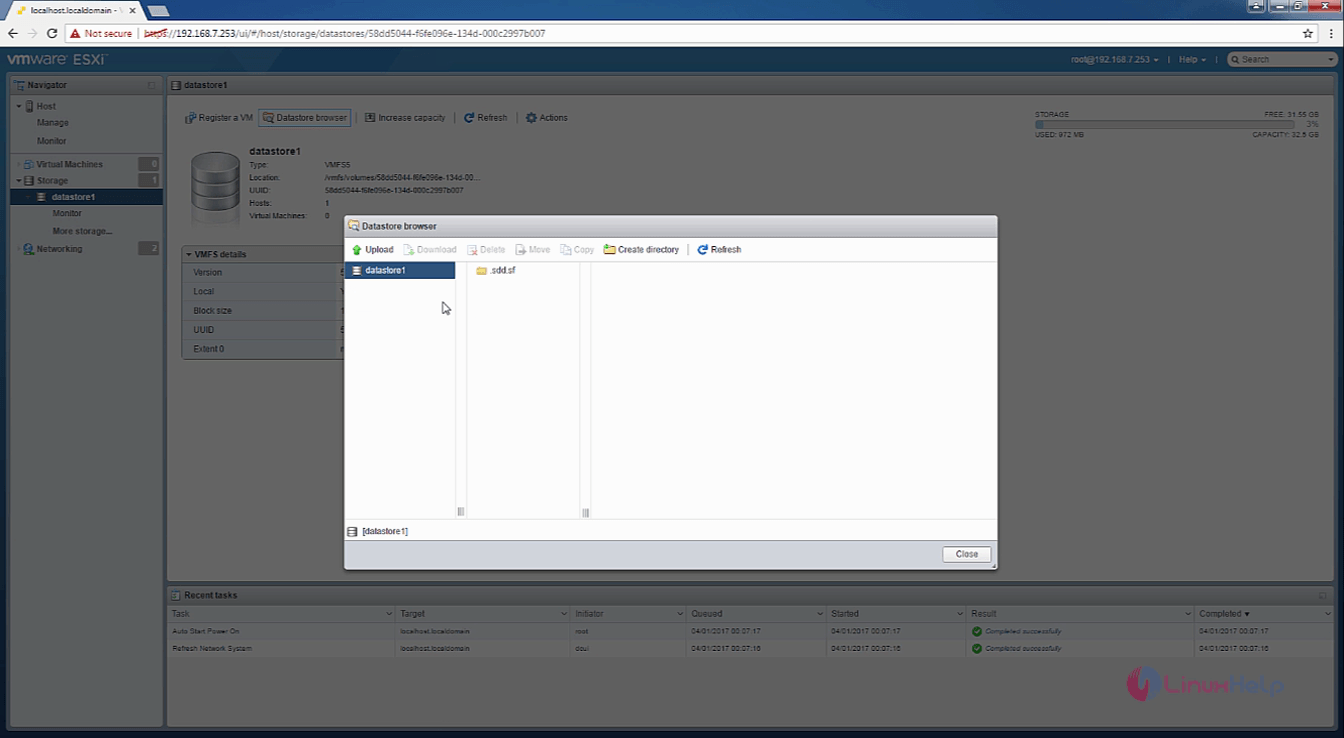
Create a directory named ISO and click ' create directory' .
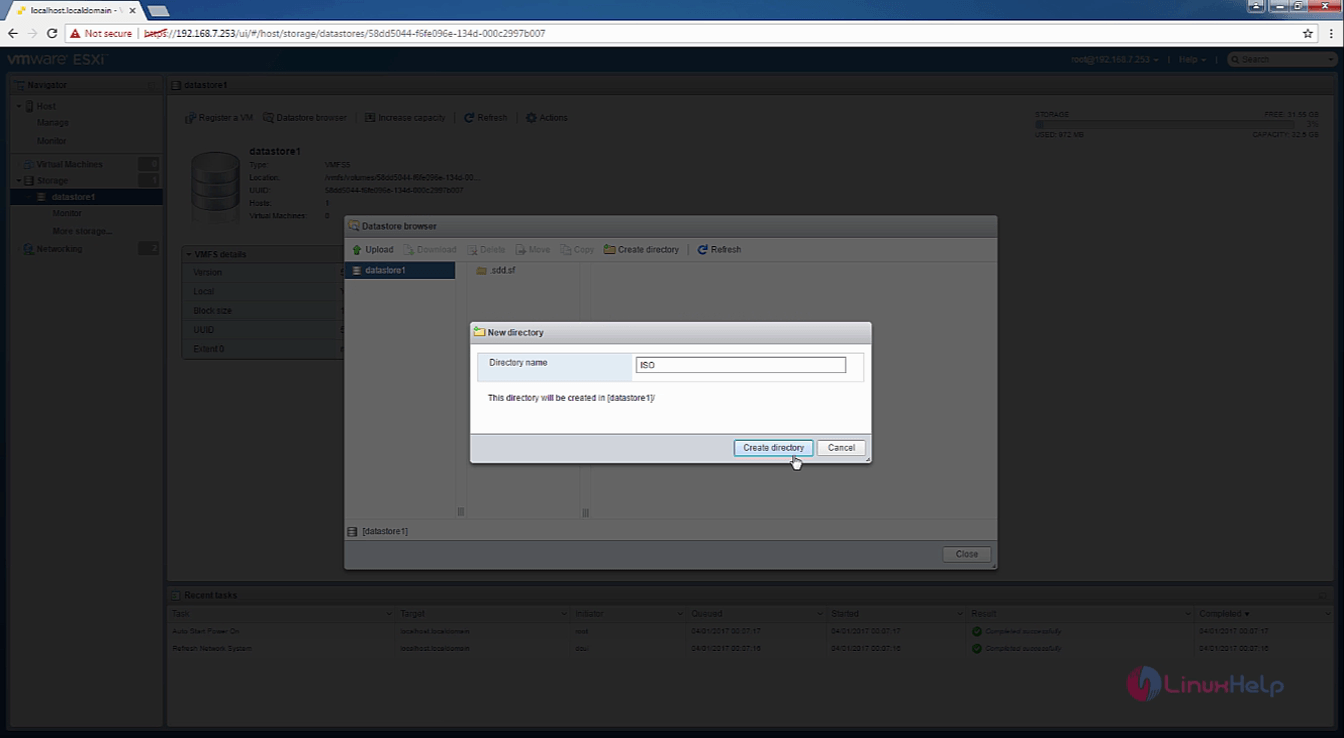
Open the ISO directory and click upload. Select the image file to be uploaded.

The image file upload is in progress and shown in progress bar on the top right corner.
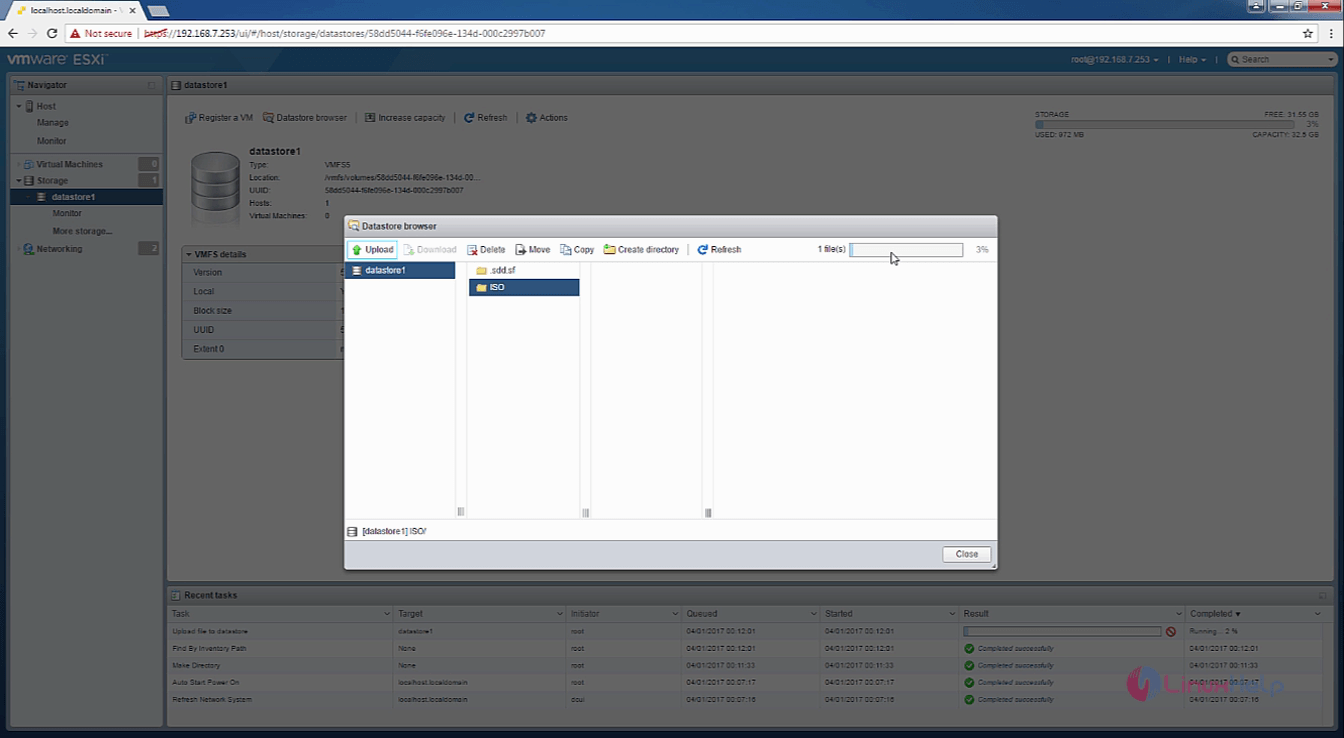
The image file is uploaded successfully and close the window.
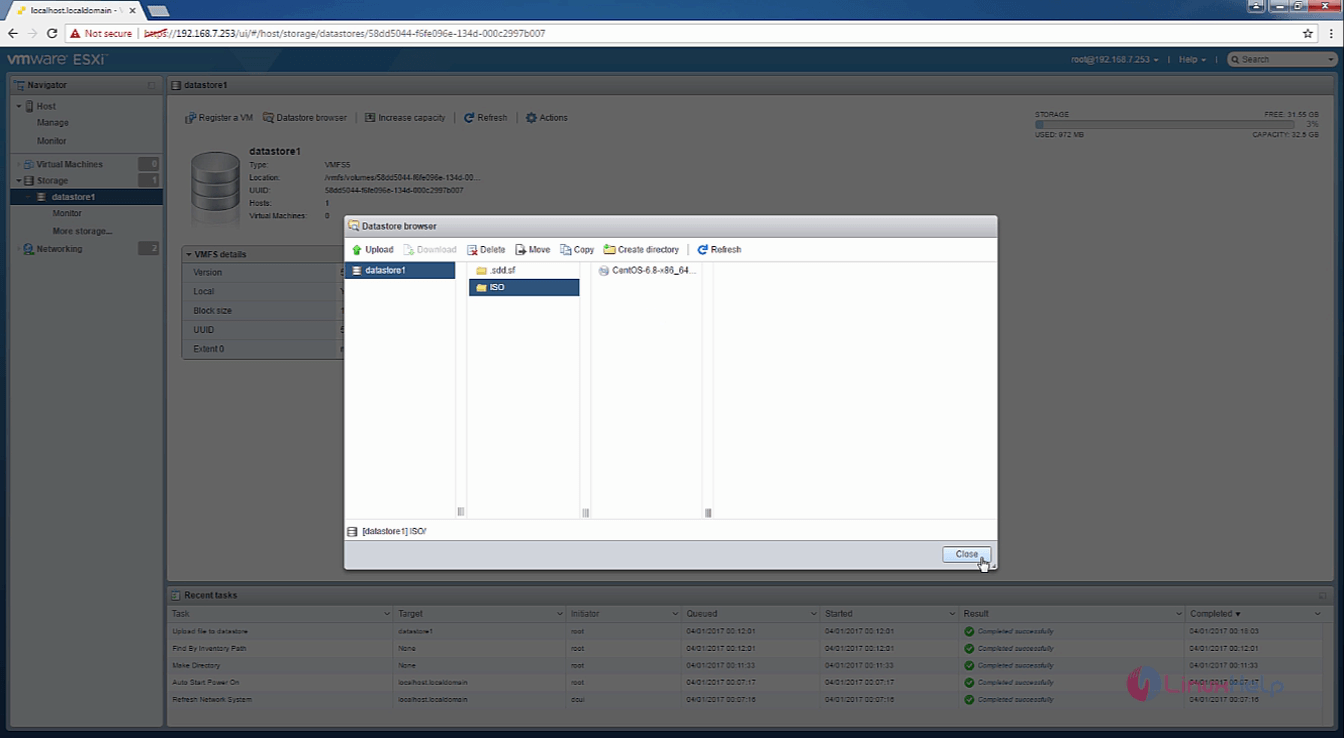
To create a Virtual machine
To create a VM, select the virtual machine in the navigator.
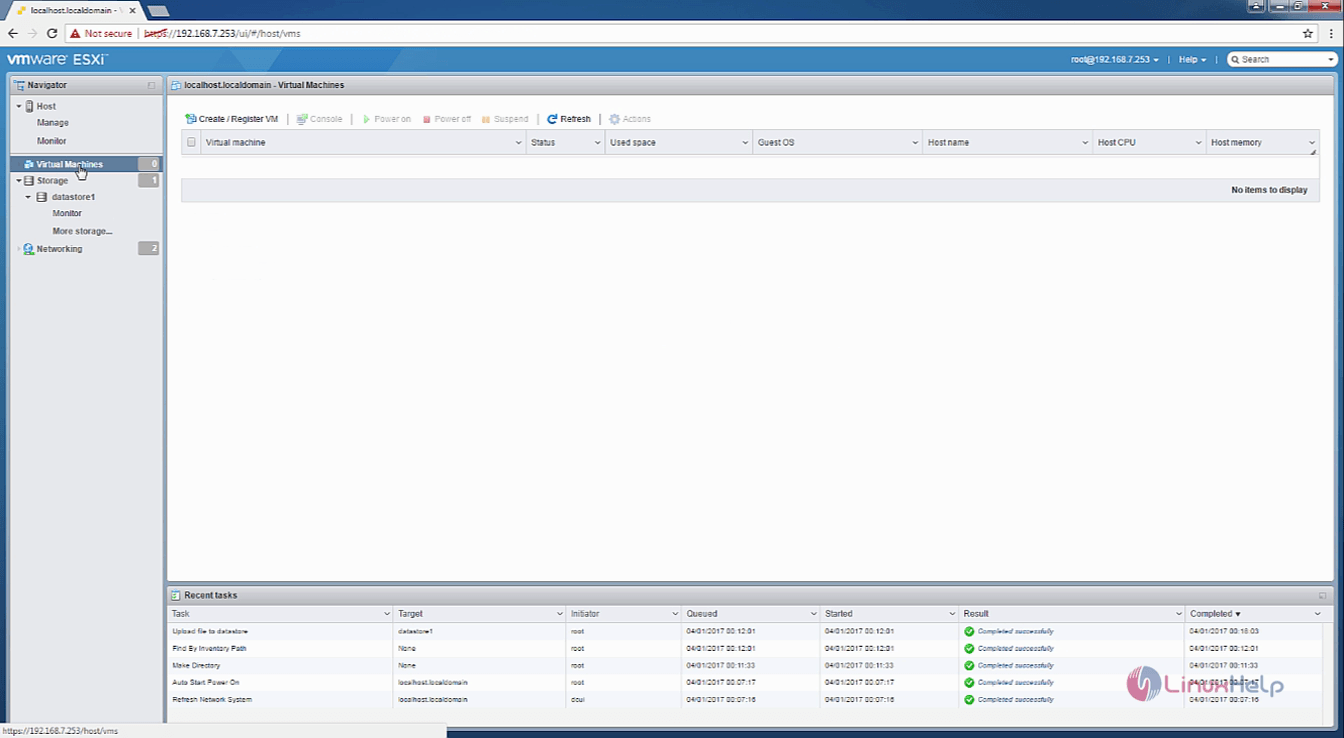
Click Create VM option. Enter the name and then select the guest os family with version and click next.
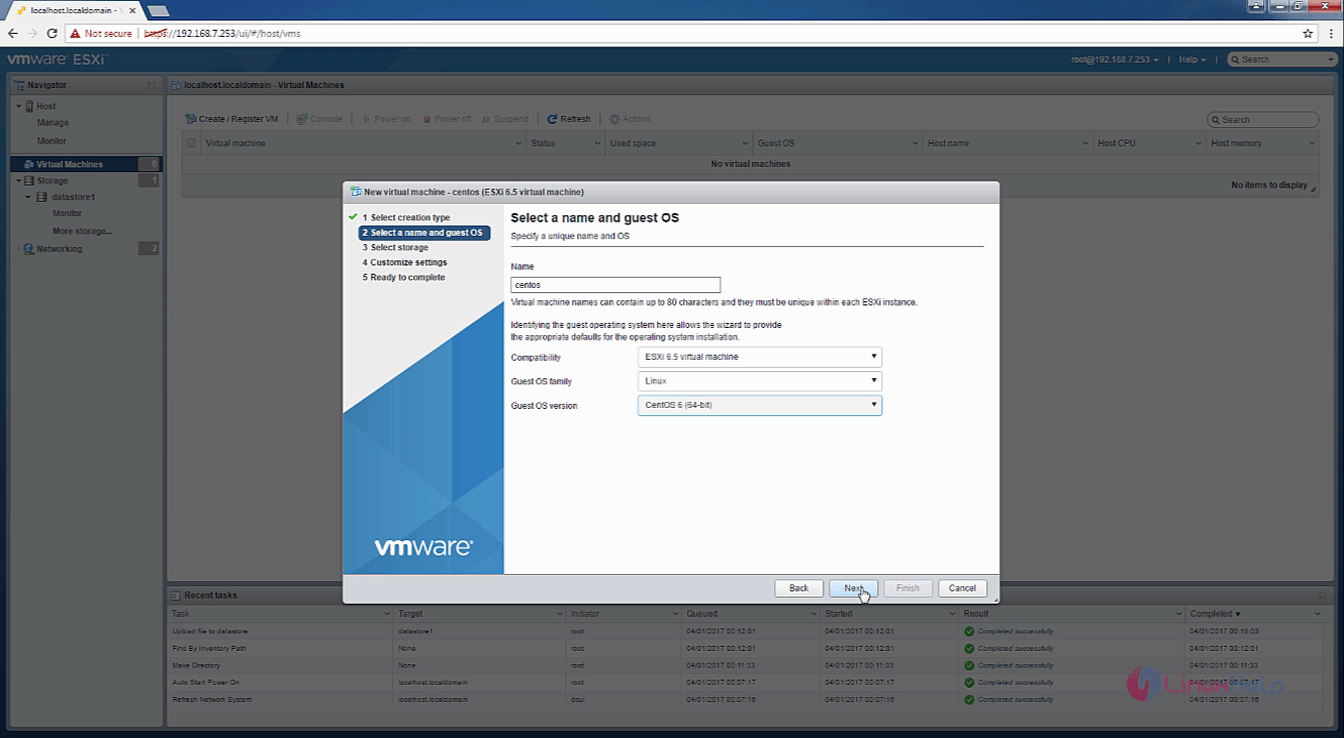
Select the storage space for the virtual machine.

Now customize the settings for the VM. Choose CPU, add memory and storage settings.
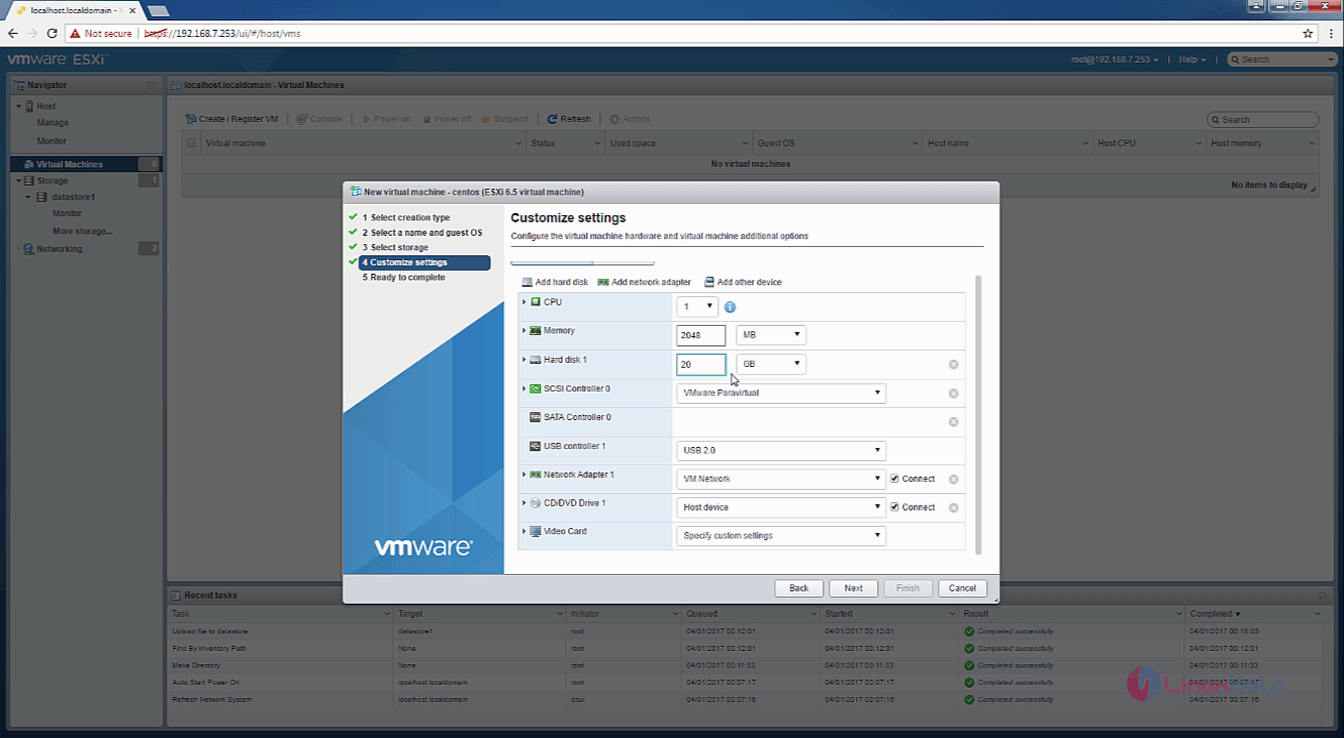
Enter the details to configure the CD/DVD drive.

Next choose the ISO image file from the datastore.
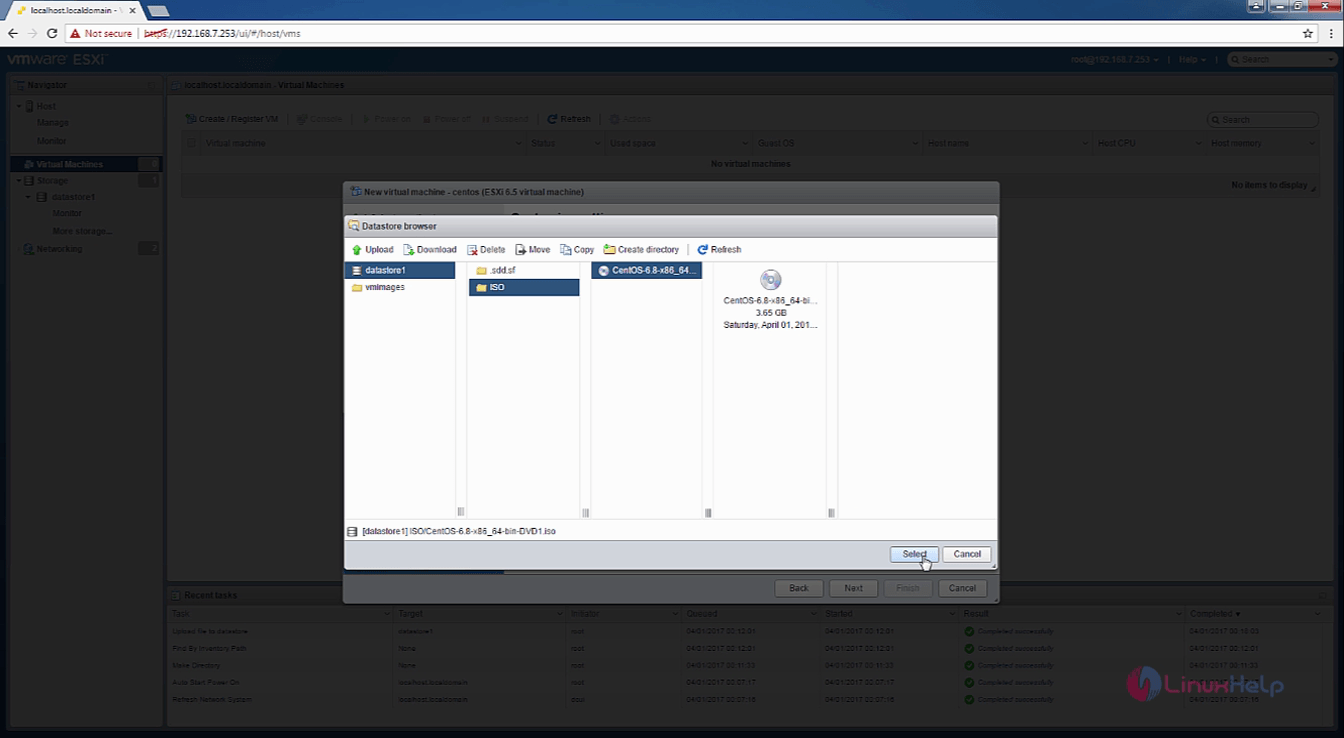
After configuring all the settings, click next
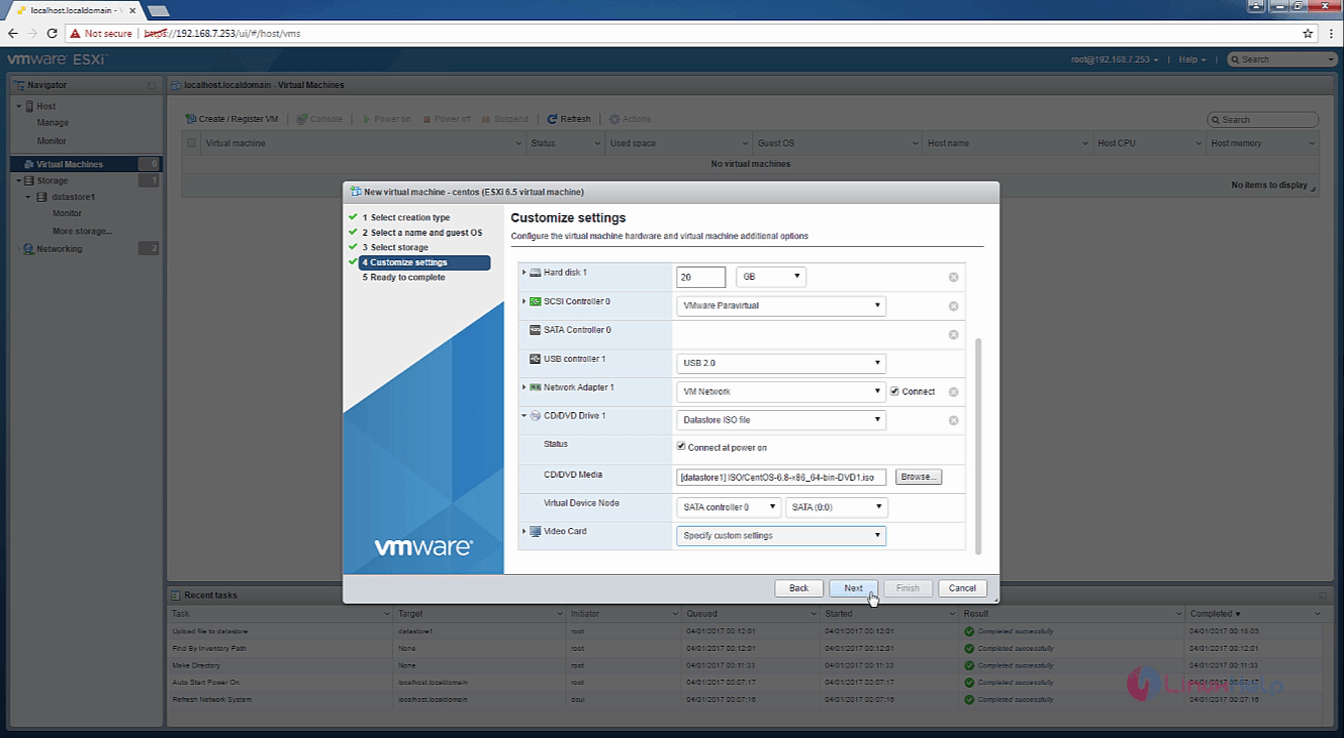
Now you can see the summary of the VM settings. click finish to create the VM.
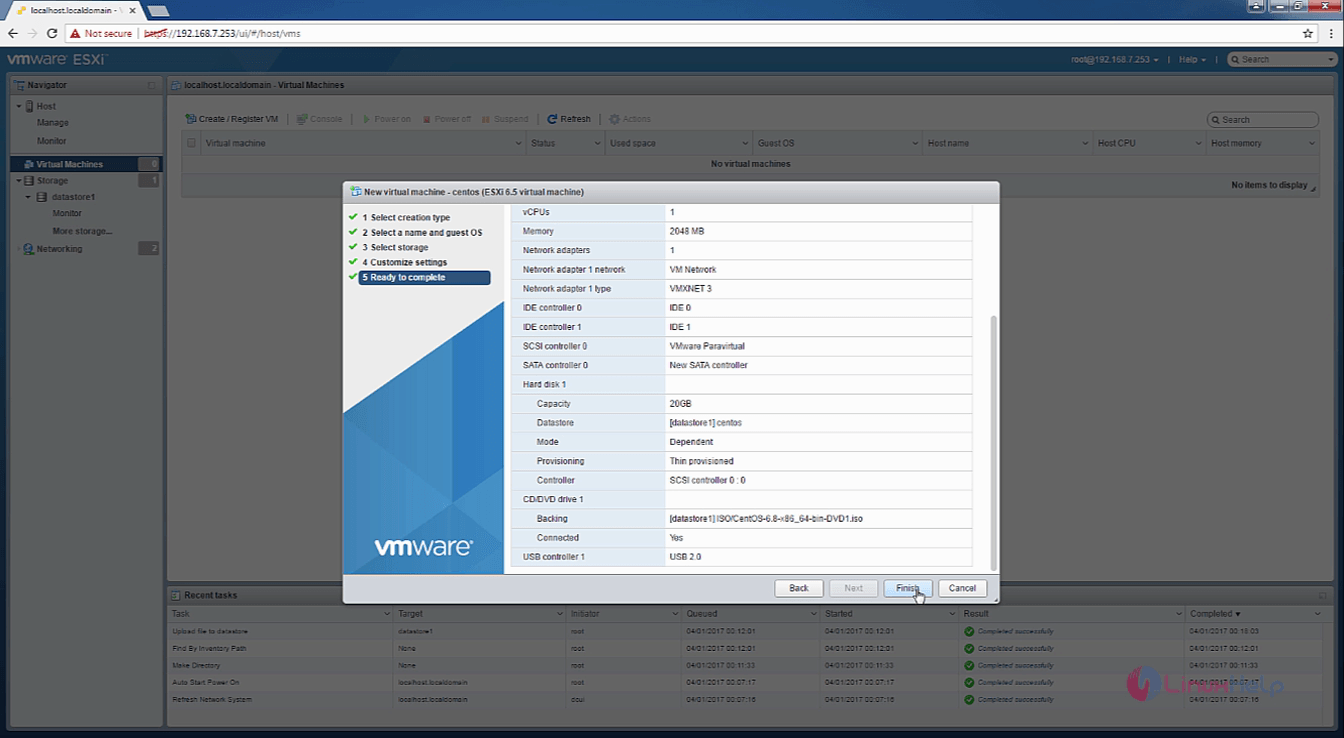
Next select the VM and click power on option.
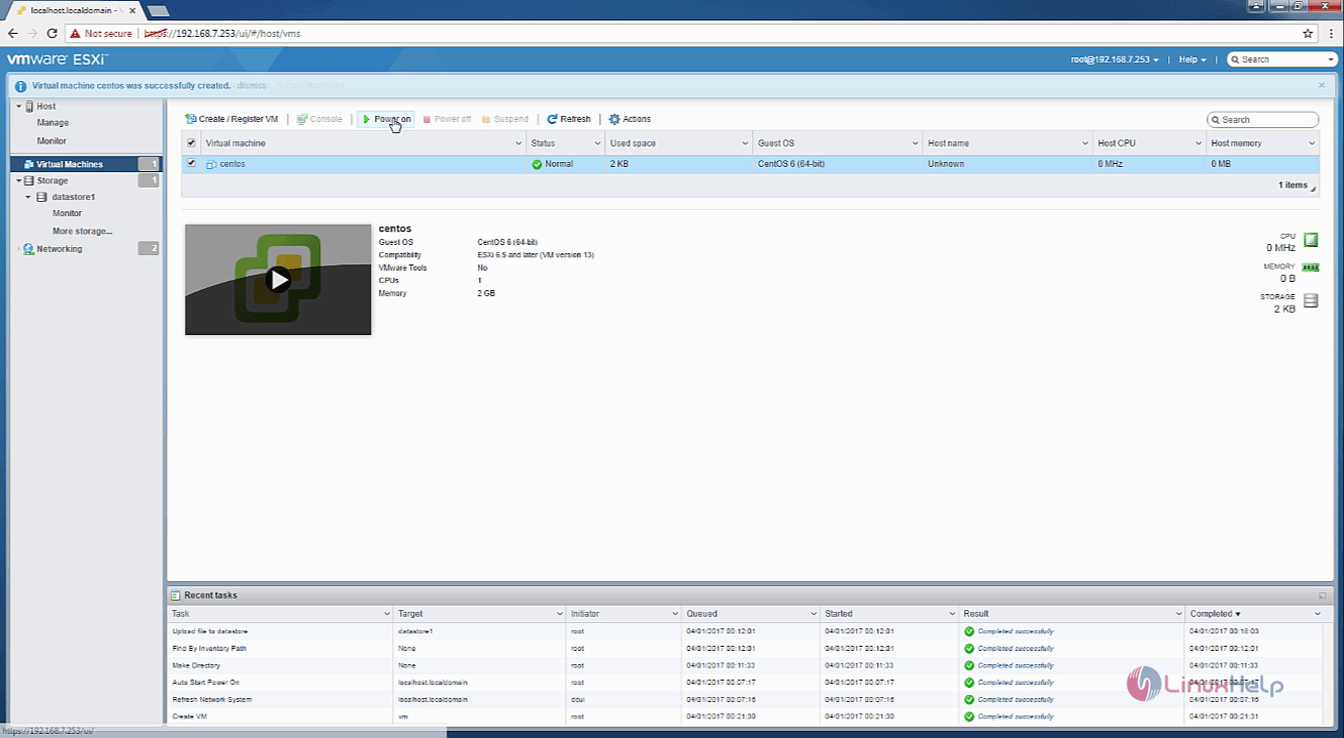
Now you can see the CentOS installer screen.
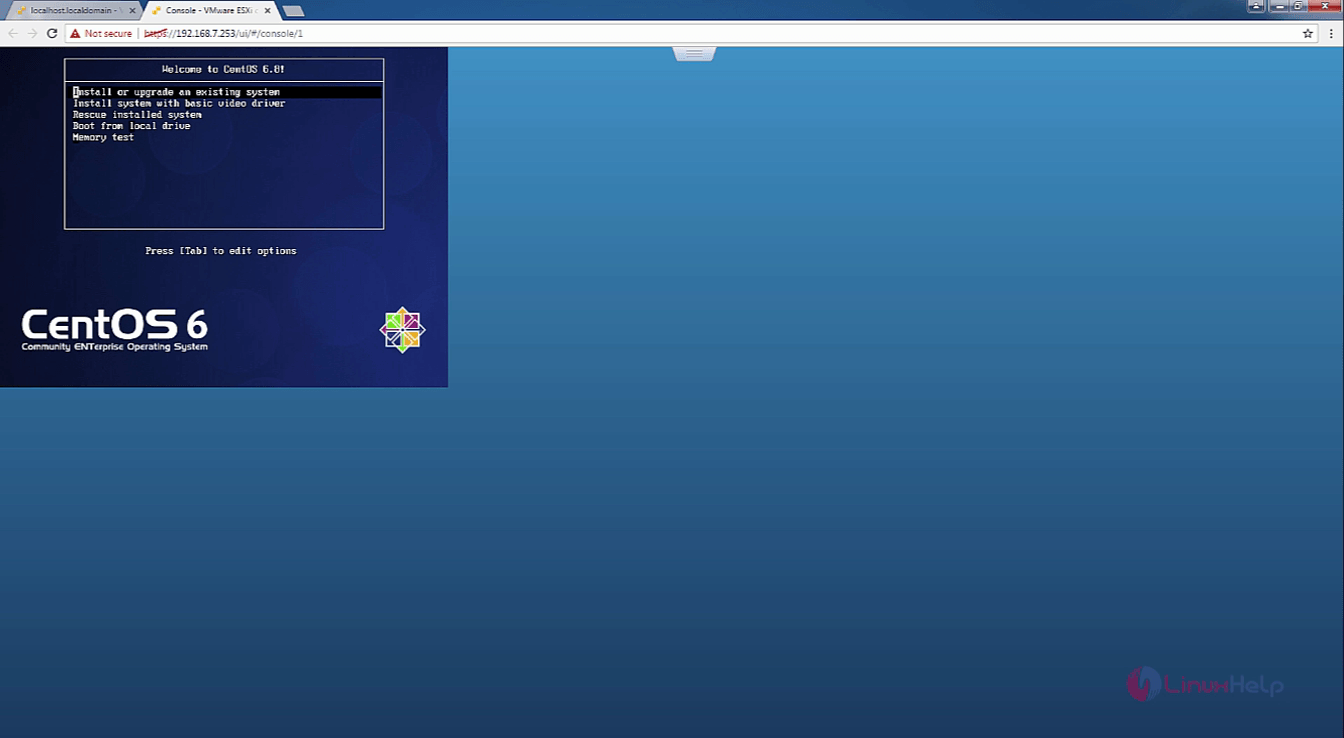
Wasn' t that an easy configuration procedure? It is easy to create virtual machines using ESXi server. Stay connected to know more about various other aspects of ESXi server from our future articles.
Comments ( 0 )
No comments available